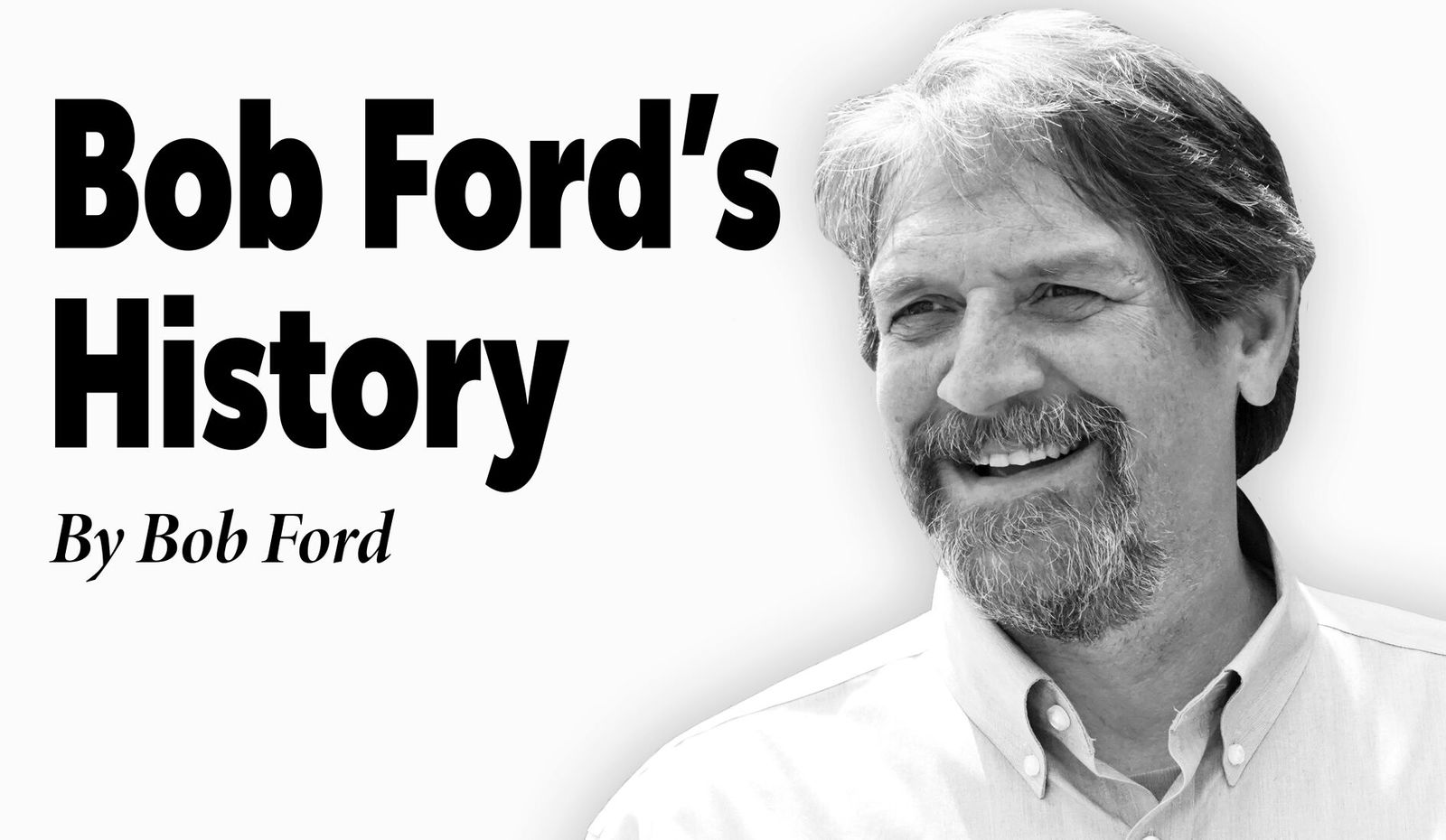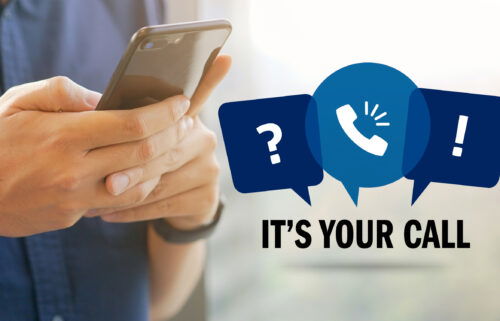TWA: Excuse me mister, that’s our Airplane!

By Bob Ford Special to
Articles and Podcasts are complementary from those helping to preserve our history: Nodaway Valley Bank, Eagle Communication, Rupp Funeral Home, Stevenson Family Pharmacy and Anonymous Buffs. To comment or join them as sponsors, robertmford@aol.com.
You’re in Kansas City, standing in line to board a TWA flight heading to Chicago with your family for a special weekend.
Up pulls a beautiful Cadillac Fleetwood, I had never seen one before. It’s a fantastic looking luxury car, very expensive. Out steps a tall thin fellow wearing a wide brimmed fedora, looking a lot like Indiana Jones. He doffs his hat at the 30 or so of us and circles the car opening the passenger door. Out pops a stunning blonde who is all smiles.
He waves to the crowd but doesn’t make eye contact as they walk by us and climb the stairs to the Boeing Stratoliner. The stewardesses are all flustered and I don’t know why? With that, they ask us to move back as the stairs are wheeled away and then the engines start up. My daughter yells out, “That’s our airplane!” Minutes later the plane taxis off, leaving us on the tarmac wondering what just happened?
This actually occurred … more than once!
The man was Howard Hughes, he owned the airline and the blonde was, well, his latest girlfriend.
The TWA Museum at the Charles B. Wheeler downtown Kansas City Airport is a walk through K.C. and aviation history. In the early years of commercial flight, TWA was a force. It was based in an up and coming “cowtown,” due to its location and history of airplane manufacturing, so says Diana Bennett, a retired international stewardess who for years flew the polar express from LA to London.
“We were a family,” she said.
The airline was headquartered in Kansas City from 1931-1964.
Second only to Pan-Am, TWA helped Kansas City grow up, it was the chic place to work, which aided in throwing off that “cowtown” image.
TWA was considered the “airline to the stars,” because of the routes and style. Bennett recalled many well known people flying her polar route.
“Don Rickles was polite, Bob Hope very quiet and Lucille Ball was anything but funny,” she said.
You can’t move millions of passengers through the air for decades without problems. In 1931, TWA’s Fokker F10 aircraft crashed in a Kansas wheat field, killing eight onboard, including Notre Dame football coach Knute Rockne.
Hijacking airplanes became a thing in the late ‘60s and ‘70s. John Testrake was captain of TWA flight 847 when it was skyjacked in 1985 with 153 people on board. The 727 traversed the Mediterranean for 17 days landing in Beirut 3 times with the hijackers demanding the release of hundreds of Lebanese prisoners held by Israel. The intervention of Ronald Reagan helped resolve the situation with one passenger — who was an American sailor — being murdered. Others were tortured. Months later hundreds of prisoners supposedly unrelated to the hijacking gained their release.
My first solo commercial flight was on TWA from Kansas City to St. Louis. I grew up a dedicated Cardinal baseball fan. In 1967 my team was headed to the World Series.
As a freshman at Central High School, I asked my father, ‘If I got a ticket to a World Series game, could I go?’
“Sure,” he said.
Thinking there was “no way” I could scrounge one up. Way … my brother’s new girlfriend at Mizzou told me weeks earlier that her St. Louis pool hall-owning father could get me a ticket.
I put the wheels in motion and one week later a letter arrived from Big Al’s Pool Hall, guess what was inside. The face value of the ticket was $8.00, but it looked solid gold to me.
Dad was stunned but true to his word, I booked a $79.00 roundtrip flight to St. Louis, thank you Gran’ma.
It was a day game during the week so I skipped school and took off in a TWA 707 from K.C.’s really short runway in the morning and would return that evening.
After landing, I hailed my first taxi and headed to the park. It was magical, the excitement and energy was almost overwhelming. I made it to my seat and what seats they were, I was close to heaven.
Close because our seats were in the very top row of the stadium. The players warming up looked like mice running around, but I didn’t care. The large man next to me extended his hand, it was Big Al. There was a small plane at eye level pulling a banner that read, “Enough of this Yaz Jazz, let’s do the Cha Cha!”
The Cha Cha was obviously for Cards first baseman Orlando Cepeda, but Carl Yastrzemski was the talk of baseball that year having just won the triple crown.
OK Cardinal die-hards, I attended the only game of the series that Bob Gibson didn’t start and win. Who pitched a complete game that day in winning the third game of the series for the Cards? (No cheating)
It was my first big adventure, I was 13. When back at school the next day I was the talk of the halls. Girls who had never noticed me before were pointing me out. Puberty was but a distant promise and they scared the hell out of me!
Huge thanks to Big Al, his daughter Patty Schmidt and TWA for making the experience a memory I carry to this today.
The TWA Museum is a trip worth taking. One of the volunteers will escort you on a tour of the place with many artifacts, including airplanes on display. They’ll give you a personal account of their time with the airline but be ready, they’ll tell you to sit down, buckle up and of course no smoking.
Oh yaah, the answer, as Keith Jackson would say … Whoa Nellie! Nelson Briles.



